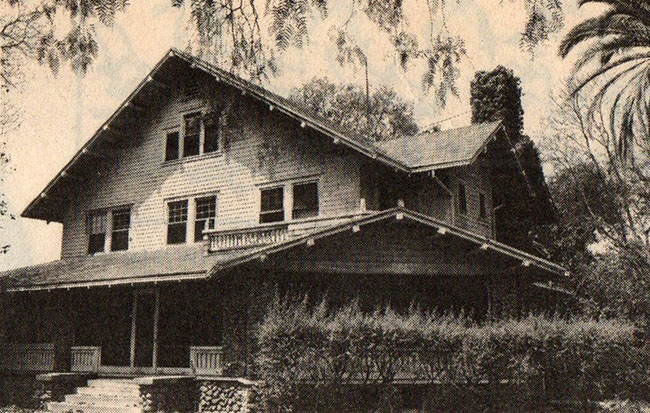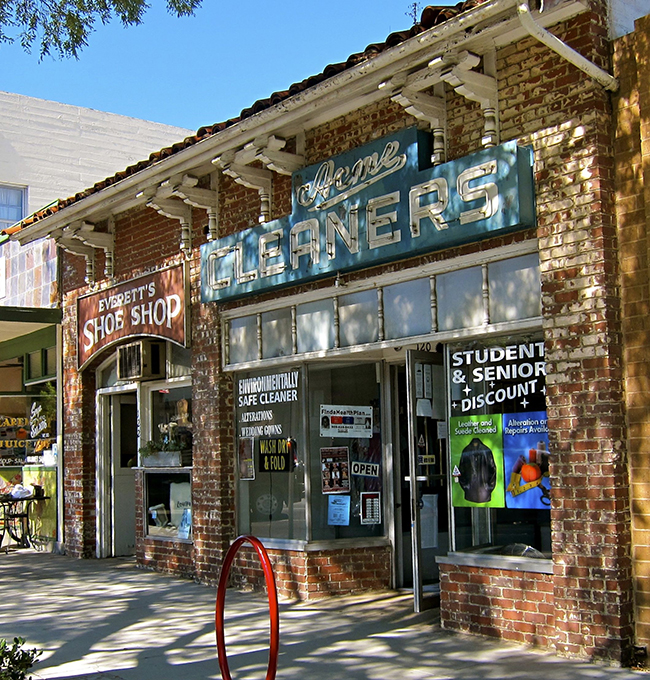Preservation month: the cultural resources preservation ordinance

The loss of the iconic Claremont Inn helped provide impetus to the preservation movement in Claremont. Courier file photo
by John Neiuber
“As the pace of change accelerates in the world around us, Americans more than ever need a lively awareness of our roots and origins in the past on which to base our sense of identity in the present and our directions for the future.”
The above quote is from the proclamation of President Richard Nixon on May 5, 1973, establishing National Preservation Week that later became National Preservation Month.
Now in May 2024, local preservation groups, state historical societies, and community-based organizations across the country celebrate preservation month through events that promote historic places and heritage tourism, and that demonstrate the social and economic benefits of historic preservation.
The early 1970s proved to be fertile ground for the sprouting of grassroots efforts to bring awareness about saving historic places. In many communities, the losses of iconic structures through the 1950s and 1960s, were the impetus for advocacy and the formation of local historic societies.

The Woodford house was demolished to make way for condominiums in the 1970s. Courier file photo
It was true for Claremont as well. Significant losses of historic structures such as the Claremont Inn at the northwest corner of College and Bonita avenues, the Claremont Public Library where the Helen Renwick Library is today, and the Woodford house at the southwest corner of Yale Avenue and Seventh Street, spurred the development of the local preservation movement and historic register, and the founding of Claremont Heritage in 1976.
This month marks a milestone in the preservation movement in Claremont. On May 9, the cultural resources preservation ordinance will go into effect. Passed unanimously by the architectural commission, it was sent to the planning commission where it passed unanimously, which sent it with a recommendation for approval to the City Council, which approved the ordinance unanimously at its April 9 meeting.
The passage of this ordinance is a watershed moment in the preservation movement in the city. The ordinance establishes objective criteria and procedures for placing structures on the local register, requires mandatory review for demolition of structures over 45 years of age, and establishes objective review and approval criteria for certificates of appropriateness for listed structures. Additionally, it requires maintenance of listed cultural resources and delineates economic incentives. It also changes the name of the architectural commission to the architectural and preservation commission.

The preservation and adaptive reuse of historic buildings is what makes Claremont, Claremont. Photo/courtesy of John Neiuber
For preservation month, the National Trust for Historic Preservation uses the theme, “People saving places.” The national trust chose the theme because it is people coming together that saves places. The adoption of the cultural resources preservation ordinance is that theme in practice in Claremont. The ordinance is the result of a group of people working together, or in this case, the ad hoc committee for citywide design guidelines and historic preservation, that was established and appointed by then Mayor Larry Schroeder in December 2017. The mayor appointed two council members, two planning commission members, two architectural commission members, and two Claremont Heritage members. The committee’s work was organized by the director of community development and the senior planner.
The committee met 20 times between 2018 and the end of 2021. A subcommittee of three people was tasked with drafting the ordinance and design guidelines. Each iteration was vetted by the whole committee and changes were made. During the process and beginning in 2022, the draft ordinance was reviewed twice by the California Office of Historic Preservation and underwent legal review. Because the ordinance changed the existing code as well as established new code, an arduous task was undertaken by city staff to ensure accuracy. The design guidelines are currently going through the approval process.
The national trust article by Sarah Heffren, “How to Save a Place: Become an Advocate,” identifies the steps to save an historic place. The first is to “build grassroots support.” It is about building awareness and education rather than going straight to the top. The second step is “activate your team.” It is about developing an action plan. The last is to “take it to the top.” This is about getting your issue in front of government leaders.
Beginning in 2008 and continuing into 2012, Claremont Heritage placed half page ads in this newspaper focusing on preservation topics. In 2012, Claremont Heritage began to build more awareness of the importance of preservation to the community, its economy, and to sustainability, through education, this column, and programming.
In the June 2015 column, this newspaper published “Preservation Ordinance and Design Guidelines — ideas whose time has come.” Coupled with the fallout from a preservation issue that came before the City Council, and subsequent events, the council displayed courage and commitment establishing the ad hoc committee and subsequently unanimously approving the ordinance. The result is an example of cooperative and respectful effort between residents and local government, and how people came together to ensure the community saves places.









0 Comments